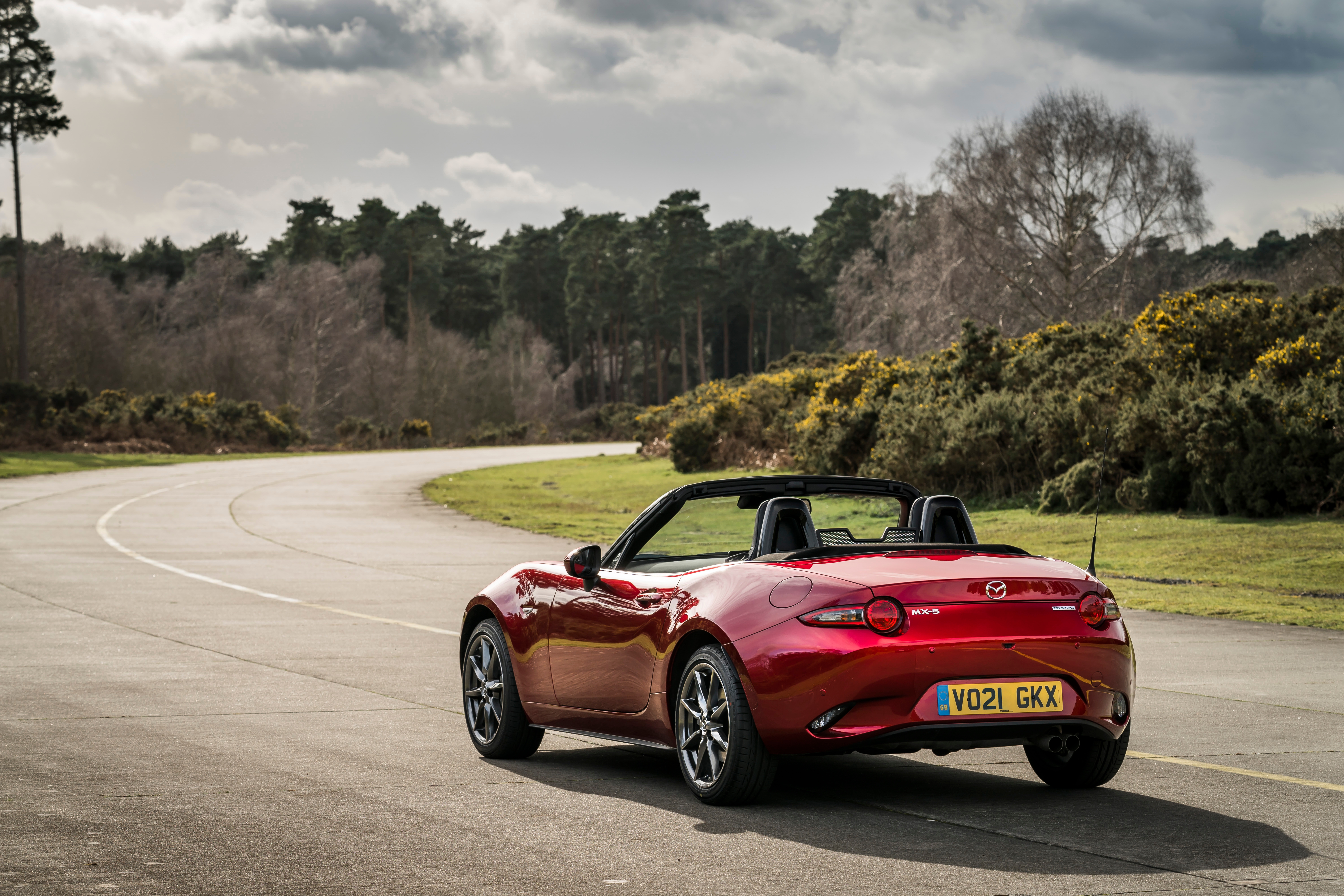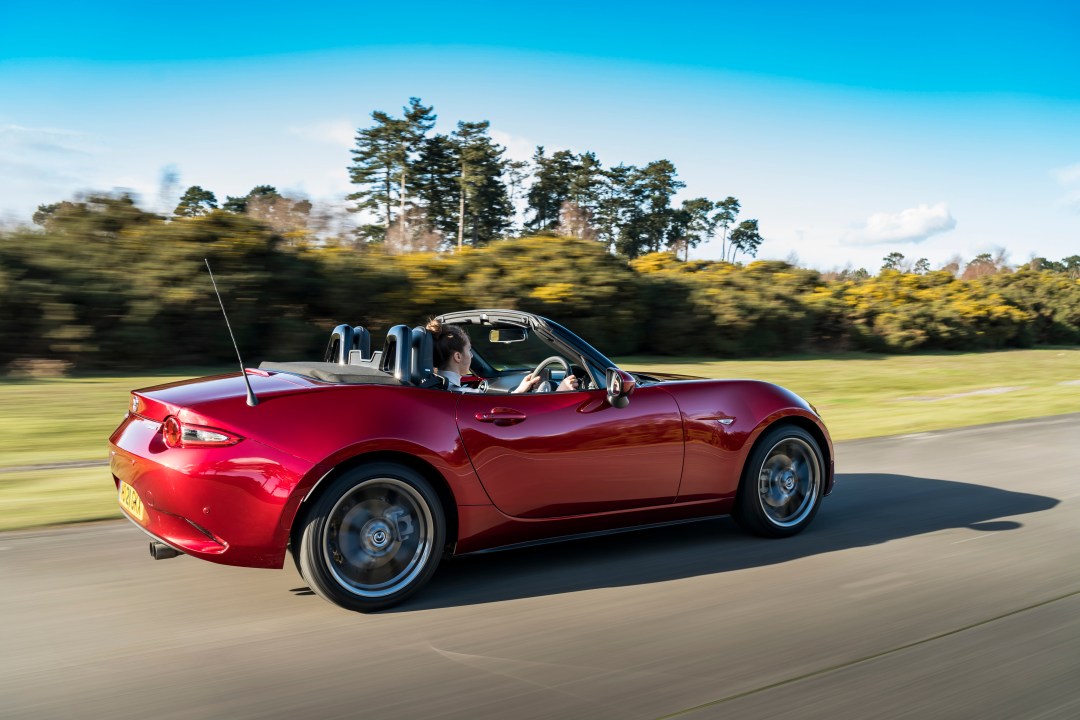The British have a long-standing reputation for coming up with great ideas, executing them quite well – and then leaving others to really run with them. Such is the history behind what is officially the best-selling two-seat convertible sports car of all time, the evergreen MX-5 made by Japanese marque Mazda.
The story goes that the MX-5 was born out of a conversation held 45 years ago between Mazda’s former head of research and development Gai Arai and US automotive journalist Bob Hall. The latter had been bemoaning the impending demise of the simple, open-top sports car after it had been threatened with extinction during the late ’60s due to US safety legislation on sales of conventional convertibles.
With Britain being a main producer of two-seat roadsters and America being its major market, UK manufacturers began to rein in production of such cars during the early ’70s and all but ceased to create new designs when old models became defunct – a prime example being the jewel-like Lotus produced from 1962 to 1975. Famed for its groovy looks, sharp handling and the exciting performance that came from combining a tuned, small capacity engine with a compact, lightweight body, the Elan could fairly be described as the quintessential ’60s sports car.

Which is probably why Mazda is said to have used it as a template during the early 1980s when, with the proposed US ban having come to nought, it set-out to create a car that combined the essence of an Elan with the reliability and ease of use for which Japanese cars had already become renowned.
When the wraps were pulled off the resulting ‘MX-5’ in 1989, its ‘pop-up’ headlamps, rounded form and apparently tiny cockpit made it immediately obvious that the Elan had been its inspiration. But Mazda’s effort was a whole lot better put together, could comfortably accommodate two tall adults, was built for safety and had ‘bullet proof’ mechanicals – all of which helped to land it in the Guinness Book of World Records within a decade as ‘the best-selling two-seat sports car in history’ with more than 530,000 sold around the world. More than 20 years later and that number now exceeds 1.1 million, with the current car being the ‘fourth generation’ model that, in its present form, has been on sale since 2019.
That the MX-5 remains as popular as it does is no mean feat. In the 30-plus years since the original arrived, today’s somewhat larger car buyers have come to expect more of everything, and many might see Mazda’s landmark creation as being decidedly lacking in electronic gadgetry, creature comforts and tyre-shredding performance.
But there are still plenty of drivers out there to whom all of those perceived shortcomings result in exactly the sort of raw, involving, unpretentious, inexpensive and fun car that simply doesn’t exist in the line-up of any other major manufacturer.
I certainly count myself among them, so didn’t hesitate when an MX-5 was made available last month for a trip to northern France followed by a run to the Italian border, on to Lake Como for the Concorso d’Eleganza old cars show, back to Burgundy to see friends and home again to the UK. Some might find it odd that a journey of 2,000-miles plus could be a pleasure in such a small car, but it really was – and it made something of a mockery of the belief that big trips need big cars (so long as you’re selfishly travelling solo or with one other).
True, the MX-5’s boot is minimal, but it easily swallows a bag big enough to hold sufficient clothes for a week away. And no, the dashboard doesn’t offer state-of-the-art touchscreen technology that promises to precisely set the heating to within a fraction of a degree – but it’s warm and snug inside and, when the sun shines, undoing a single latch and folding it back has the roof stowed and neatly locked down in little more than three seconds (without the aid of a single electric motor).
In keeping with the car’s fun nature, I eschewed motorways throughout the journey, following the roads less travelled through France and Switzerland before tackling the alpine passes in glorious sunshine and then taking advantage of the MX-5’s small size to thread through Italy’s rush-hour traffic.
Easily capable of cruising at 80mph and returning an overall fuel consumption of close to 50 mpg, the car really did seem to combine the best of classic, two-seat motoring with just the right degree of modern refinement. And, at a starting price of £24,355 (or £26,255 for the ‘RF’ version with metal, retractable top) it proves that cars with personality and a sporting bent don’t have to cost a fortune.
It’s only sad to think that, in just eight years time, the ban on new combustion-engined cars means the MX-5 – already a throwback to a lost era of motoring – will no longer be available to buy new here in the UK.
Although it might be all the excuse you need to get your order in now – and ‘mid-life crisis’ jibes be damned…







Comments